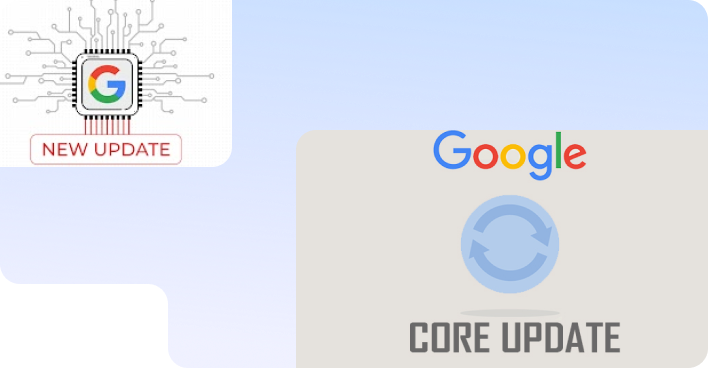No magic - just our painstaking joint work on the site
How to increase the click-through rate of snippets: 9 tried-and-tested tips
Bringing web pages to the top of search result rankings is one of the main tasks of SEO promotion. However, excellent organic ranking on Google alone does not guarantee that the site will immediately receive uninterrupted traffic flow. This is where snippets come in, as their content is written to spark users’ interest and desire to go to the landing page. If the ad is unimpressive, the promotion becomes pointless.
Optimizing snippets to increase CTR is an essential part of search engine marketing, but it’s often overlooked in SEO. By paying proper attention to snippets, you will be able to increase traffic and improve page conversion significantly.
Let's take a closer look at the concept of CTR and what this metric affects, and share proven ways to increase link click-through rates in search results.
What is CTR (Click-Through Rate)?
In simple terms, CTR (Click-Through Rate) is the percentage ratio of the number of transitions to the number of views. To use the term itself, it refers to how many people click through to a web page. The base term applies to contextual, banner, and video ads and snippets (blocks with links) displayed in search results.
The metric is calculated according to the formula:
CTR = clicks/impressions x 100%.
A CTR of 3% means that 3 out of 100 visitors who see the site in the SERP follow the link.
The higher this indicator, the more visitors visit the site. Accordingly, the likelihood of a targeted action – ordering a service, buying a product, or gaining information– increases with higher rates. A metric analysis is helpful from a strategy point of view, as it allows you to predict traffic and prioritize SEO promotion.
Which CTR is considered to be good
Different promotion channels, such as contextual and targeted advertising, video advertising, SEO, and email marketing, have various indicators for a good click-through rate. Some marketers conduct research and calculate average metrics, but it's not a good idea to focus on general figures.
Aside from ad quality, CTR is affected by the following:
- Business niche and competition. For some areas, an indicator of 1% is a typical result; for others, a similar figure indicates low promotion efficiency
- Region of promotion
- Display on desktop or mobile
- Keyword relevance. The largest number of clicks are on branded queries
- Snippet position in search results
Statistically, the top 3 pages in a search account for 50% of clicks, while the first link accounts for 28% on its own. CTR and the position of the page in the search results are interrelated. In the same way that Google rankings affect click-throughs, CTR helps promote ads to the top of search results.
How to choose pages for snippet optimization
To find pages that need CTR optimization, you need to log into Google Search Console and select the Performance report and the Search Results section. The date range is defined by default as the last three months. But depending on the characteristics of your business and the seasonal patterns of sales, you can explore different ranges.
Next, you should select the indicators “Total Impressions,” “Average CTR,” and “Average Position” and set filters by country and topic (button + “New”).
It makes sense to optimize CTR if the project gets onto the first page (or even better - in the TOP-5) of Google.
In the upper right corner of the console, you can select position limits (for example, below 6) and CTR (average).
A single search phrase is selected from the list of queries, which ranks well but has few click-throughs. Overall keyword click-through rate trends are checked using an SEO service (such as Ahrefs Keywords Explorer).
If the query is a consistent search trend and overall organic results have a high click-through rate, it makes sense to improve your CTR to increase page traffic. On the flipside, non-clickable pages are not worth the time and effort.
How to improve snippet CTR (Click-Through Rate)
If a detailed analysis has revealed pages with low click-through rates, it’s worth compiling a list of them and working on their snippets.
Our tips can help you figure out the reasons for the lack of click-throughs to improve performance. So, how to Improve Click-Through Rate (CTR)?
1. Matching Title to H1 meta tag
For good ranking and a high click-through rate, the title of the page and the meta tag should not overlap and be completely different in meaning. The best option is similarity without duplication. For example, the title could be "Buy a corner sofa with delivery in Kyiv,” while H1 could be "Corner sofas from Ukrainian manufacturers.”
You can check if the headline and H1 meta tag are correct and displayed in the announcements by using the audit functions of Ahrefs, Serpstat, or another SEO platform.
2. Engaging titles
The title, on the one hand, should be catchy and attract attention. On the other hand, it should correspond to a specific proposal. Matching information on the snippet and the site is essential for conversion. Clickbait doesn't live up to user trust. Sensational, "yellow" headlines generate interest but don't drive sales and orders. Moreover, they could negatively affect the company's reputation and rating.
3. Optimal title length
You can find out how the snippet will look in the search results on a desktop or mobile device using SEO services. The optimal title length for correct display without trimming in Google is 50-60 characters.
4. Matching the search query to the intent
The content of the snippet and the page to which the link leads must match the goals of the user entering the search query. If a user is looking for pizza in Lviv, the search results should clarify where to find the nearest restaurant or where to order food with delivery.
5. Unique Selling Proposition
As mentioned, getting to the top of a search doesn’t guarantee clicks every time the ad is viewed. Among several offers, the user will always choose the most interesting one. Therefore, it is worth considering the competitive advantages of your company and the promoted product and displaying them in the ad.
If possible (and appropriate), use brand queries. They will help to make the company recognizable and increase the trust and loyalty of the target audience.
6. Contrasting with common standards
If you want your announcement to stand out from other results, it's worth responding to a standard request that differs from the common belief. For example, "How to wean a cat off tearing wallpaper using PET, PETG, and PVC plastic." A pet owner facing a problem will most likely choose this option among the standard answers with suggestions to buy a scratching post, claw pads, or a repellent spray.
Expressing an original idea encourages users to follow the link to find more information. This method is suitable for promoting informative content and selling new products.
7. Addressing the target audience
When forming the Title and Description that appear in the snippet, considering your target audience is just as crucial as writing content. If the product is intended for professionals, specific terms can be used. However, simple and clear language is more appropriate for goods, services, and information content for the general public.
8. Using Numbers
Numbers in the headings and the text attract attention, increase the number of responses, make the text easier to read, and allow information to be structured. If there is a number in the article’s title, the person already knows the number of points and can quickly “run though” the text, focusing on the most useful and interesting details. This point is crucial for attracting a busy audience that does not have time to read content in depth.
If relevance is essential for the request, you should specify the year (for example, “TOP 5 marketing tools in 2023”) and when referring to specific events, specify their exact date.
9. Rich and Featured snippets
Informative and visually appealing Rich Snippets blocks are created using micro-markup, contain prices and company ratings, and are displayed in any position. Another kind of advanced snippet, Featured Snippets, are placed in the top zero line of search results and contain images and videos. The text part is presented as a numbered, bulleted list, table, or paragraph placed above the heading.
Such blocks are highlighted by Google based on their ability to provide the best answer to a query according to the search engine's estimation. Rich and featured snippets are a popular way to boost CTR, and their efficiency has been proven countless times.
Final Thoughts
When a site is on the first page of Google search results but does not bring the expected traffic, it is worth analyzing the click-through rate of key queries and working on meta tags. The task is rather time-consuming, but a competent approach gives good results. SEO tools like Google Search Console, Serpstat, and Ahrefs will help simplify the process. If reaching the TOP-10 seems like an ambitious (but definitely achievable) goal, order promotion at Sprava Agency, and our experts will help you take your business to the next level.
We care about improving your sales :)




























